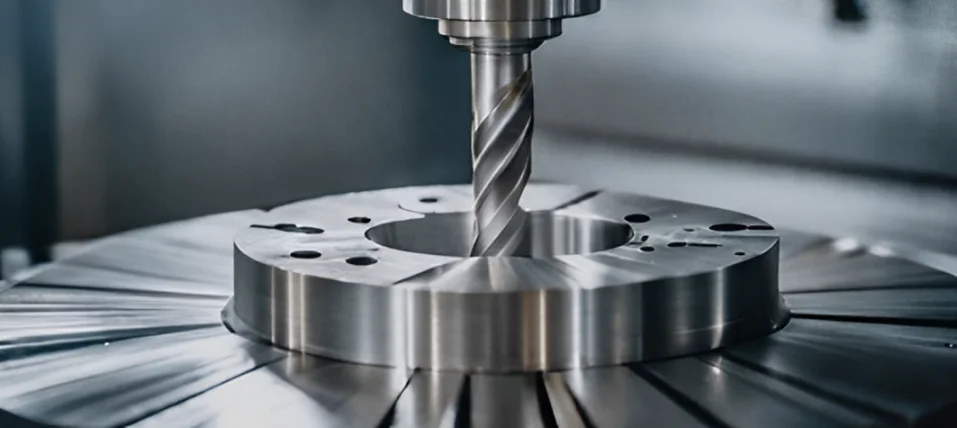When it comes to selecting metals for jewelry and tools, strength, durability, and resistance to wear are crucial factors. While aesthetic appeal is essential for jewelry, functionality and toughness are paramount for tools. Over the years, metallurgists have identified several metals that combine these qualities exceptionally well. This article explores the top 10 strongest metals that excel in both jewelry crafting and tool-making, offering a comprehensive guide for enthusiasts and professionals alike.
Titanium: Lightweight Yet Durable
Titanium is renowned for its exceptional strength-to-weight ratio, making it ideal for both jewelry and tools. It is highly resistant to corrosion, scratches, and extreme temperatures. For jewelry, titanium offers a modern, sleek finish that doesn’t tarnish over time. Its hypoallergenic properties make it perfect for rings, bracelets, and necklaces for people with sensitive skin. In tool-making, titanium is often used in high-performance applications such as surgical instruments, aerospace components, and high-end knives because it provides strength without adding unnecessary weight.
Tungsten: The King of Hardness
Tungsten is one of the hardest metals known and is frequently used in rings and bracelets that are virtually scratch-proof. It has a high melting point, making it suitable for industrial tools and cutting instruments. Tungsten carbide, a compound of tungsten, is particularly popular in the jewelry world because it combines extraordinary hardness with a polished, shiny surface. This metal is ideal for individuals seeking jewelry that withstands daily wear and tear while maintaining its original luster.
Stainless Steel: Affordable Strength
Stainless steel is a versatile and cost-effective metal that provides impressive strength and durability. It is corrosion-resistant and requires minimal maintenance, which makes it perfect for both jewelry and tools. In jewelry, stainless steel is widely used for rings, watches, and chains, offering a modern look at a fraction of the cost of precious metals. In tool-making, stainless steel is indispensable due to its resistance to rust and deformation under heavy loads, making it a staple in kitchenware, hand tools, and industrial machinery.
Platinum: Luxury Meets Durability
Platinum is often associated with high-end jewelry due to its lustrous appearance and rarity. Beyond its beauty, platinum is highly durable and resistant to tarnish and corrosion. Unlike softer metals such as gold, platinum maintains its shape and finish even under heavy use, which is why it is preferred for engagement rings and heirloom pieces. In addition, platinum’s density and strength make it valuable in specialized tools and laboratory equipment, where precision and longevity are essential.
Cobalt Chrome: Tough and Hypoallergenic
Cobalt chrome is gaining popularity in jewelry and medical applications due to its impressive hardness and hypoallergenic properties. In jewelry, cobalt chrome offers a bright, silver-like appearance that resists scratches and fading. Its resistance to wear makes it an excellent choice for wedding bands, rings, and bracelets designed for active lifestyles. In the world of tools, cobalt chrome alloys are used in high-performance drills, cutting instruments, and surgical tools, where toughness and reliability are critical.
Gold Alloys: Strength Beyond Purity
Pure gold is soft, but when alloyed with metals like nickel, copper, or palladium, its strength increases significantly. Gold alloys are widely used in jewelry because they retain the desirable properties of gold, such as corrosion resistance and luster, while becoming more durable. For example, 18k and 14k gold provide a balance of beauty and strength, suitable for rings, necklaces, and bracelets. In specialized tools, gold alloys are sometimes used in electronics and high-end instruments due to their conductivity and resistance to corrosion.
Palladium: Lightweight and Strong
Palladium is a member of the platinum group of metals, prized for its lightweight nature and excellent durability. It has gained popularity in fine jewelry for engagement rings and earrings, especially as a platinum alternative. Palladium does not tarnish easily and requires minimal maintenance, making it ideal for daily wear. In industrial applications, palladium is used in catalytic converters, electronics, and precision tools, thanks to its stability under high temperatures and resistance to corrosion.
Nickel Alloys: Industrial Powerhouses
Nickel-based alloys, such as Inconel and Monel, are known for their extreme strength, resistance to heat, and corrosion resistance. While not as commonly used in jewelry due to potential allergenic reactions, nickel alloys are invaluable in tools and machinery. These metals can withstand harsh environments, making them suitable for aerospace components, chemical processing equipment, and high-performance cutting tools. Nickel alloys combine toughness with versatility, proving indispensable in industrial applications.
Zirconium: Resilient and Attractive
Zirconium is a less common but highly resilient metal used in both jewelry and specialized tools. It is extremely resistant to corrosion, scratches, and heat, making it an excellent choice for rings, wedding bands, and even medical implants. Zirconium’s metallic luster and hypoallergenic properties add to its appeal in jewelry design. In tools, zirconium alloys are used in high-performance applications where durability and resistance to chemical reactions are critical.
Chromium: Protective Strength
Chromium is primarily valued for its ability to form protective coatings on other metals, significantly enhancing durability. Chrome plating is commonly applied to jewelry and tools to prevent rust, scratches, and tarnishing. In jewelry, chrome-plated pieces maintain their shine and resist everyday wear, while in tools, chromium coatings increase hardness and lifespan. Its role in stainless steel and various alloys makes chromium essential for enhancing both strength and aesthetics.
Conclusion
Choosing the right metal for jewelry and tools requires careful consideration of strength, durability, corrosion resistance, and aesthetic appeal. The metals listed above—titanium, tungsten, stainless steel, platinum, cobalt chrome, gold alloys, palladium, nickel alloys, zirconium, and chromium—represent the top 10 strongest metals that excel in these areas. Whether you are crafting a long-lasting engagement ring or designing industrial-grade tools, these metals provide the reliability and performance needed for demanding applications. By understanding the unique properties of each metal, consumers and professionals can make informed decisions that balance beauty, functionality, and endurance.
